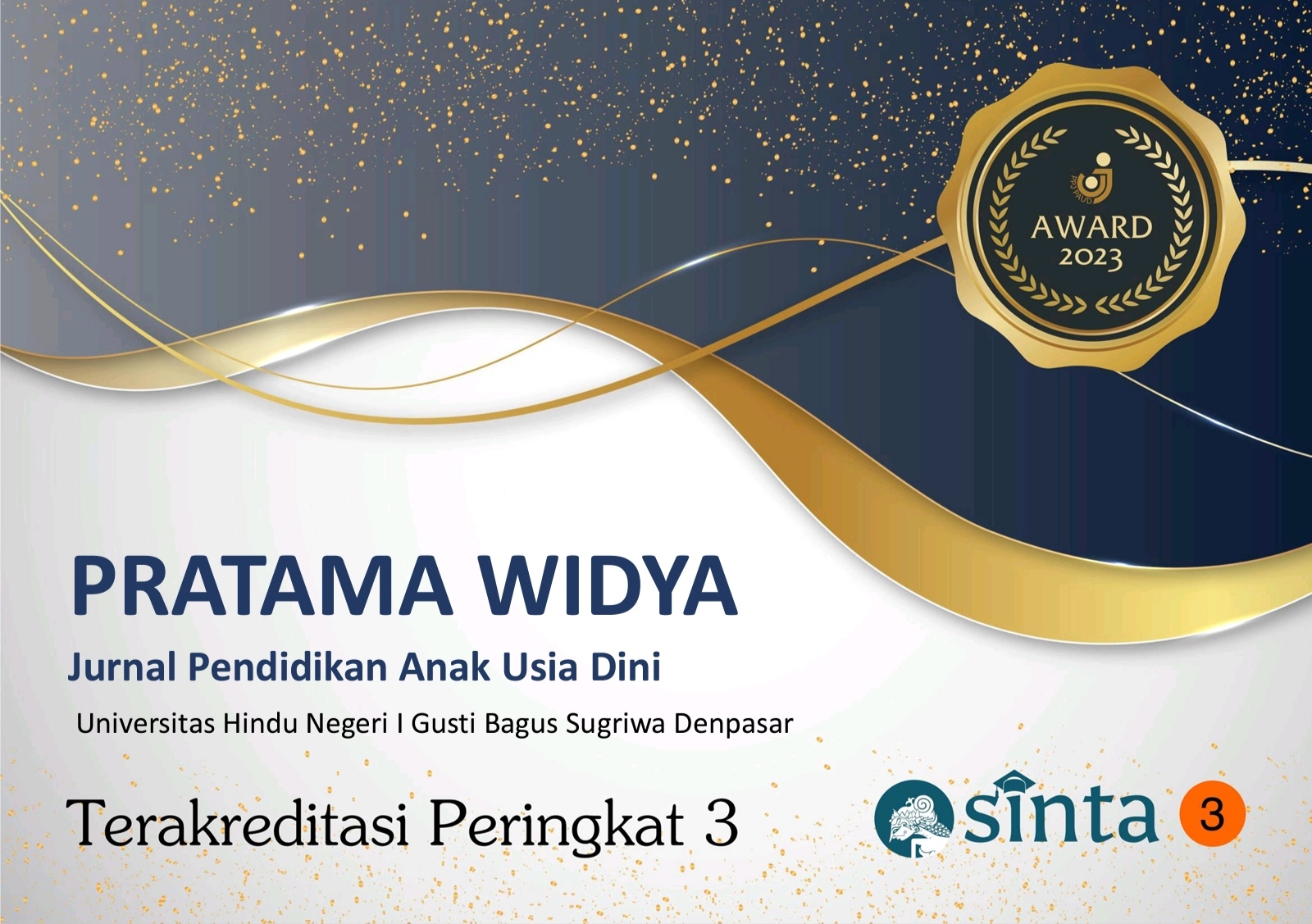PENERAPAN CERITA BERGAMBAR DALAM MENGEMBANGKAN KREATIVITAS ANAK KELOMPOK B DI TK TUNAS HARAPAN II DESA PELAGA KECAMATAN PETANG KABUPATEN BADUNG TAHUN AJARAN 2019/2020
DOI:
https://doi.org/10.25078/pw.vi.385Keywords:
Application of Picture Stories, Creativity, Early ChildhoodAbstract
Early childhood education is the first and foremost education so learning must also be considered because the most rapid development stage is at an early age. One thing that must be developed at an early age is children's creativity. This creativity is one of the packages that children will carry to their old age. Creativity is a development that is not easy to develop, therefore TK Tunas Harapan II develops creativity by applying pictorial stories. The application of picture stories seems to be liked by children and has received great attention from teachers and parents. The problems discussed included (1) How was the learning process in the application of pictorial stories in developing the creativity of group B children in TK Tunas Harapan II, Pelaga Village, Petang District, Badung Regency, 2019/2021 Academic Year? (2) What obstacles did the teacher face in the application of pictorial stories in developing the creativity of group B children at TK Tunas Harapan II, Pelaga Village, Petang District, Badung Regency, 2019/2021 Academic Year? (3) What is the impact of the application of picture stories in developing the creativity of group B children in TK Tunas Harapan II, Pelaga Village, Petang District, Badung Regency, 2019/2021 Academic Year? This study aims to determine the application of pictorial stories in TK Tunas Harapan II. The theories used to analyze the problem are interaction theory, audiovisual memory theory and behaviorism theory. This research uses qualitative research. The research subjects used were group B class teachers, group B students, school principals and representatives of students' parents. Data collection methods are non-participant observation, structured interviews, document study and literature study. The collected data were analyzed using descriptive qualitative analysis methods with steps of reduction, data presentation, and conclusion drawing.
Downloads
Published
How to Cite
Issue
Section
License

This work is licensed under a Creative Commons Attribution-NonCommercial-ShareAlike 4.0 International License.








